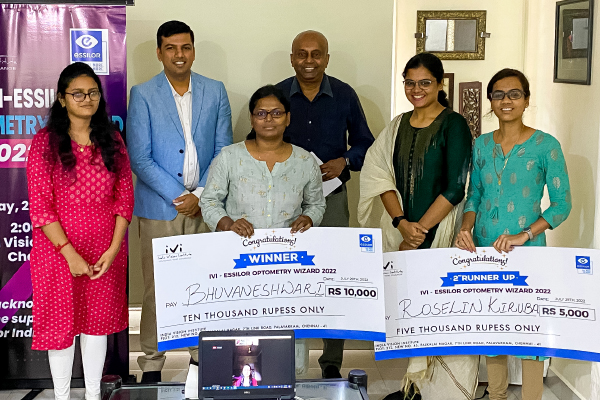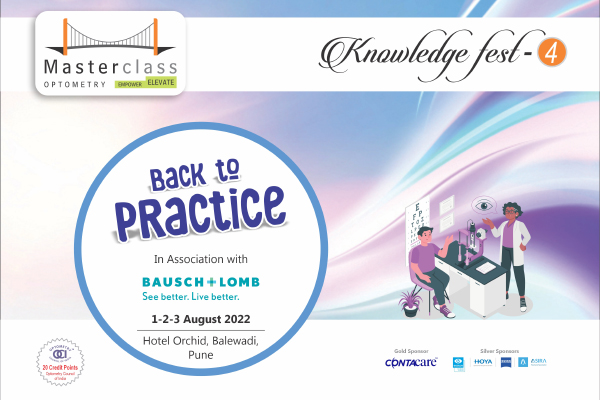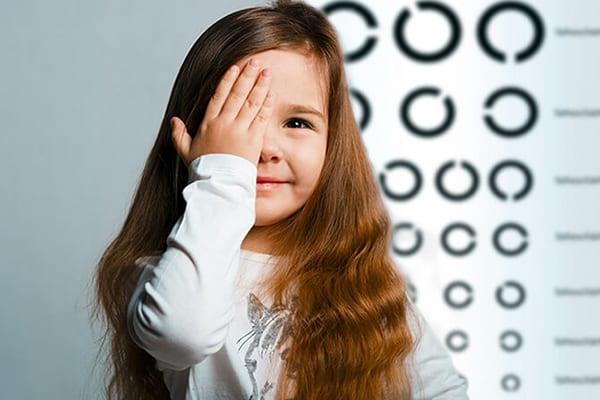In 2015, all UN member countries endorsed the 2030 Agenda for Sustainable Development. It established a blueprint for durable peace and prosperity for humanity and the planet. At its heart are the 17 sustainable development goals (SDGs) and 116 objectives, which are an urgent call for action by all countries – developed and developing – in a global partnership to ensure that all people have access to health, justice, and prosperity. SDGs recognize that ending poverty and other deprivations must go hand-in-hand with strategies that improve health and education, reduce inequality, and spur economic growth – all while tackling climate change and working to preserve the environment.
IVI and VisionPlus organized a series of panel discussions focusing on eye health as a critical enabler in achieving sustainable development goals. The first session, 1 December 2022, was on Eye Health and SDG 5: gender equity. IVI CEO Vinod Daniel chaired the panel. It comprised Dr. Srinivasa Maramula, Associate Director of Public Health Research and Training and Scientist, Brien Holden Eye Research Centre, LV Prasad Eye Institute, and Sabitra Kundu, Head, Program Development, Mission for Vision. The panelists discussed how improving access to eye care services for women and girls contributes to achieving SDG 5 and the approaches required to advocate for equal access to eye care services at all levels.
“SDGs work towards the goal of leaving no one behind,” said Vinod Daniel, and eye health has to be an integral part of sustainable development. Eye health has interlinkages with many sustainable development goals. Eight of the 17 SDGs are directly or indirectly linked to eye health. Good eye health means economic independence, a better quality of life, social and emotional well-being, and improved access to health care. According to Dr. Srinivasa Maramula, good eye health is essential for the overall well-being of an individual, and women are no exception.
Studies conducted worldwide have indicated a higher prevalence of vision loss among women. One study conducted in India has shown that women are 35% more likely to be blind and have 69% higher odds of being cataract blind. To compound matters, the odds of a woman accessing cataract surgery are 27% less.
Rates of vision loss are higher among women than men because they have poorer access to services and travel long distances to get eye care help. Lower levels of education among women and socio-cultural factors such as family commitments and lack of family support are other factors that put women at greater risk. The fact that women tend to live longer than men also has a bearing on higher rates of female vision loss because aging can produce vision-related effects.
In many cases, the higher rates of vision loss experienced by women is a socially determined phenomenon. Studies show that even after adjusting for demographic differences, there are 108 women with blindness for every 100 men. Among women, and more broadly, vision loss is not just an outcome of inequality but also a contributor to inequalities. Inequality is the result of many barriers to eye care. These range from the availability of eye health services and their accessibility to care affordability and social acceptability. Sabitra Kundu observes, “These barriers lead to higher rates of visual impairment, which severely impacts educational achievement, workforce participation, mobility, quality of life, and mental health.”
Mr. Daniel identified the need for reliable data on gender inequality in eye health and asked the panelists what could be done to address the issue. “Much of the data on spectacle compliance we have at the moment is focused on children. More research should focus on understanding the phenomenon among women and the elderly,” argued Dr. Maramula. He called on researchers to generate more gender-stratified data. As a routine practice, studies should aim to come up with more data on age and gender inequalities in eye health.
Recognizing that innovative technologies have the potential to serve as vital force multipliers in combating gender inequality, Vinod Daniel requested the panel to shed light on the role emerging fields such as teleophthalmology can play. “It is about addressing the gap in access. We need to create awareness for people to know that they can avail of services such as teleophthalmology,” Mr. Kundu noted. The panel was of the opinion that since access and uptake are challenges we face in bridging the gender gap in eye care, any strategy that takes eye care closer to the community will be beneficial. This would include door-to-door eye care and teleophthalmology to bring eye care closer to those in need.
Primary eye care programs can adopt various strategies to help facilitate gender mainstreaming and reduce the gender gap. They can start by networking with local organizations such as self-help groups and women’s collectives. Awareness campaigns targeting these local networks can foster substantial gender equality in eye health because they operate at the grassroots level and can communicate with people in their villages and communities to generate eye health awareness. Similarly, engaging school teachers and other influential people in rural communities can be critical to raising awareness because they enjoy the trust and respect of people in their villages.
Advocacy is an indispensable part of a sound gender mainstreaming strategy. Advocacy should strive to ensure that gender is an embedded component of every primary eye care program. It should highlight that unless we have targeted interventions that reach out to women and marginalized groups, we cannot achieve gender equality. At the district, state, and national levels, more must be done to advocate with governments so that eye care programs are sensitive to the needs of women.










